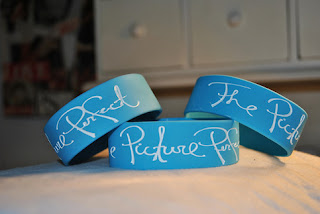One of the examples he shows is how Rebecca Black's viral hit video/song "Friday" still ranks highly on a innocent search of the word "friday." If you were living in a cave last year, "Friday" became a huge hit mostly because it was so bad that you had to experience it at least once. Unless, you were a 13 year-old girl. Then you probably thought it ranked right up there with Justin Bieber in the pantheon of greatest music of all time.
And that's the problem when we try to define "quality music" (or quality anything for that matter). As the saying goes, "One man's trash is another man's treasure." Skrillex's music might be nirvana if you're into EDM, but it might be the depths of audio hell if you're into Nirvana the band. And likewise if you're a big dixieland fan or marching band fan, or classical music fan, or hip-hop fan....... you get the point.
In fact, Frank Sinatra is regarded as one of the greatest singers and musical icons by most of the world (take a look at this footage of Ol' Blue Eyes in the studio), but I had a very knowledgeable and well-thought-of music professor from a major university write me about his poor technique and phrasing and how it crushes him that the masses over-rate him so. Quality is a moving target.
That's one of the reasons that I try to never make blanket statements like "This is bad," "This is good," or "This is mediocre" when doing the weekly song analysis on my Big Picture production blog. What I consider good or bad is probably exactly the opposite of someone out there, and who am I to say that they're wrong?
Music is something that you can't touch, but it can touch you. It's all about how it speaks to you and makes you feel. It might be a hook, an arrangement, a melody or lyric that has that special spark that only you hear, even if the rest of the world doesn't. It's your special connection that takes you to another dimension that maybe only you can get to, and only from one particular song. Who is any one else to dare comment on that connection?
That's why it's so important for an artist to keep searching for an audience, because regardless of what kind of music your doing and your proficiency level, your audience is out there. It may be just a dozen people, but they're waiting for you to find them. The music you make will be really important to them, even if the rest of the world doesn't get it.
Making a hit is really, really hard, even for the best hit makers. When a song becomes a "hit" (meaning that some group of people immensely dig it), it's happened for a reason. There's magic that's involved that should at least be appreciated, even if you can't get your arms around it. Any music that touches the heart of another is special. The smartest in our business know enough to learn from that and apply it to their own work. Because in the end, music quality is a moving target. Hitting the bulls eye is the tough part.
-----------------------------------
Help support this blog. Any purchases made through our Amazon links help support this website with no cost to you.
You should follow me on Twitter for daily news and updates on production and the music business.
Check out my Big Picture blog for discussion on common music, engineering and production tips and tricks.




